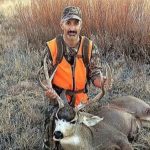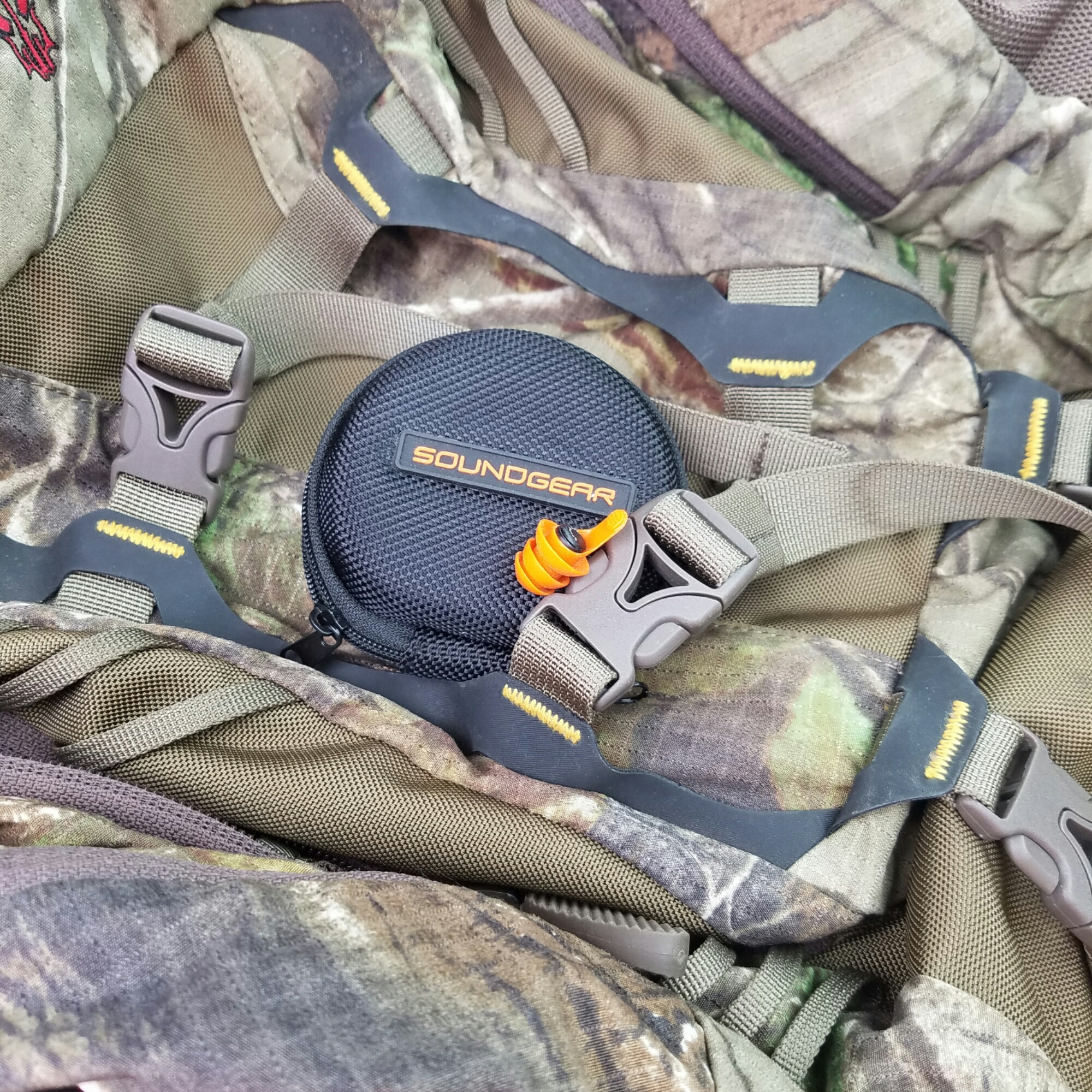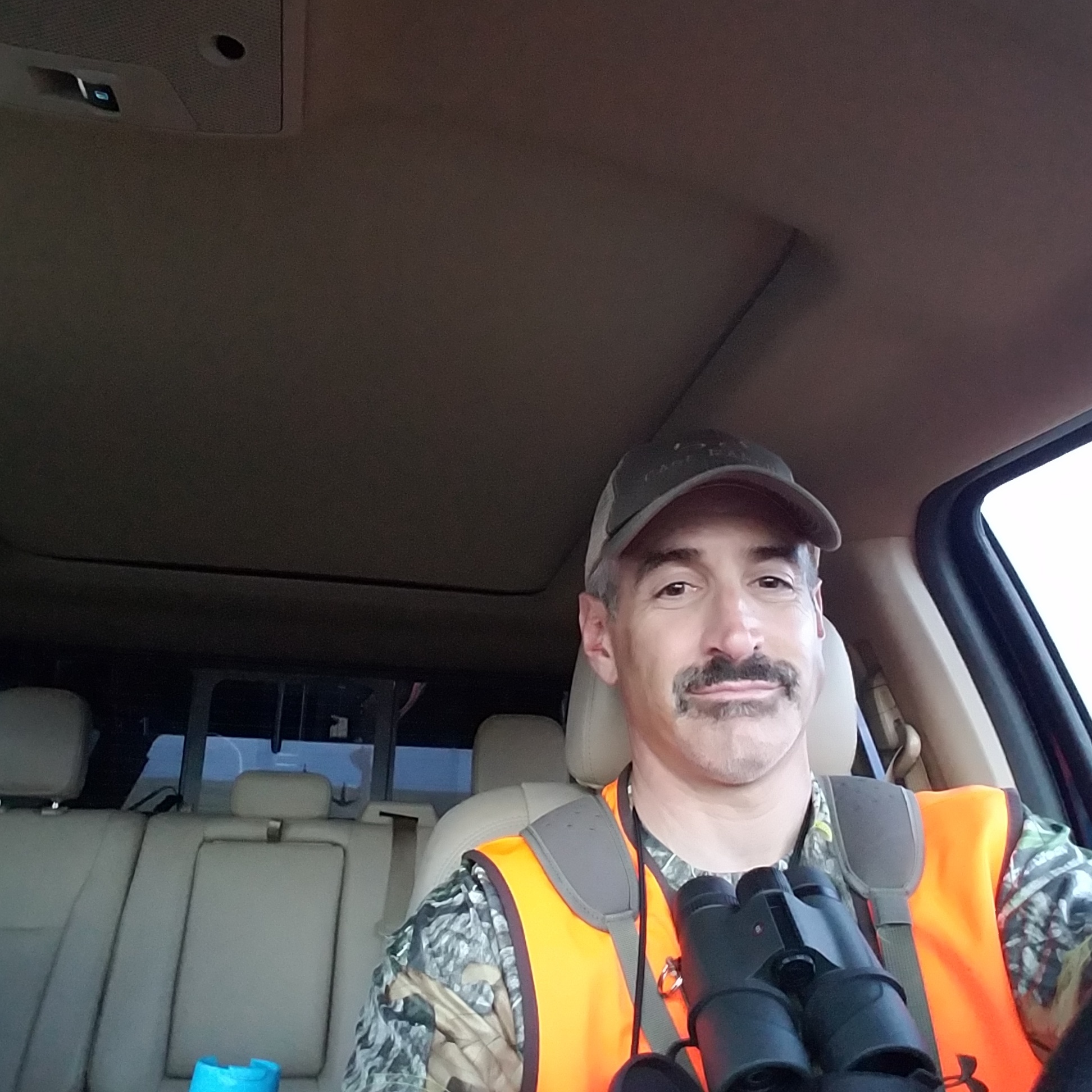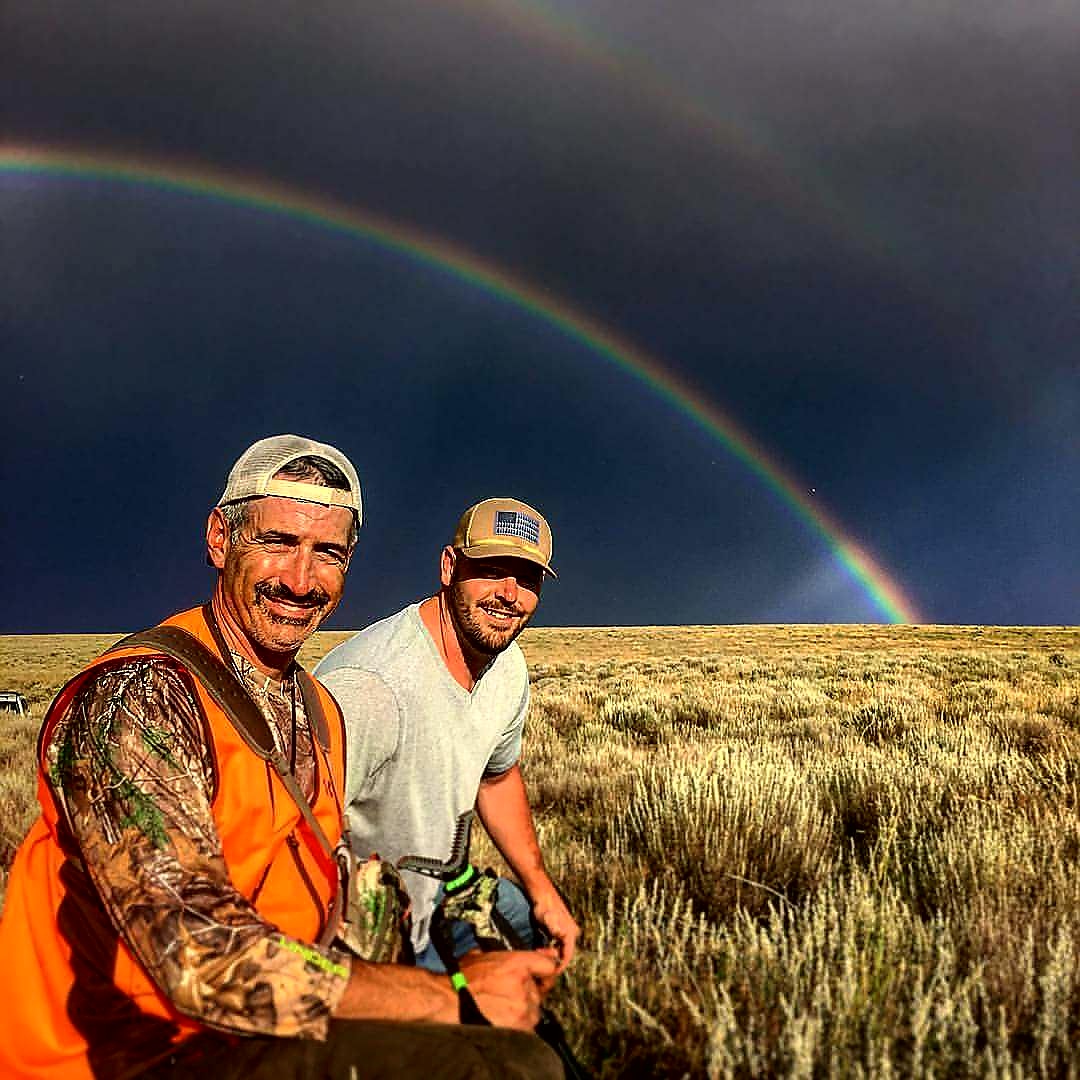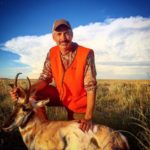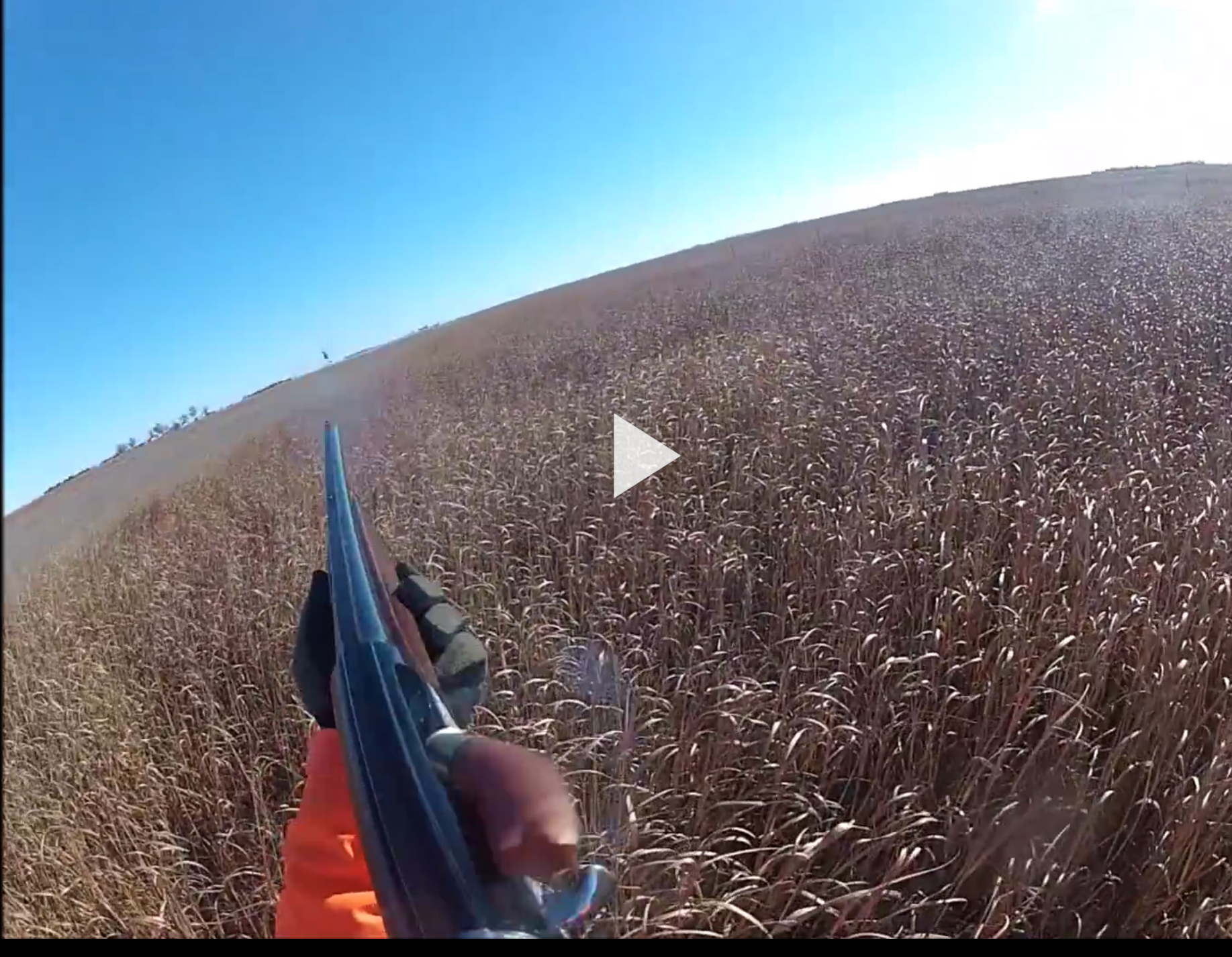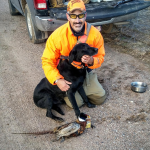I arrived at the Cage Ranch just before 1 pm on the third day of Colorado’s deer rifle season. It was 86 degrees, and a 20 mile per hour dusty wind was blowing from the southwest. These were hardly optimal conditions for deer hunting. Recognizing that any and all deer would be bedded down, I decided the best strategy would be to slowly walk through the dense cottonwood trees that border the dry creek. The sand on the creek is cool, and the banks provide shelter from the strong wind. It took me 45 minutes to make my way to the eastern fence line of the Shipping Trap pasture. I took a circuitous route in order ensure I did not alert any animal of my presence. As I walked north over the hill that sits above the creek, I paused to glass the area. Almost immediately I saw a whitetail doe and fawn resting in the tall grass. They saw me but did not startle. When I finally made my way to the edge of the creek, I used a single tree as cover and looked west. There was a buck in the middle of the arid riverbed. He was too far away to make out his exact size, but he was worth a closer look. Slowly, I backed away from the creek, and then I navigated my way to the position where I thought he was resting. My estimation on his position proved accurate, as I found myself staring at his back at 30 yards. He eventually turned his head when he caught my wind. It took him about 5 seconds to process the situation before jumping up and bolting northwest. As he made his way over the far bank, he frightened another young buck who also joined in the run. Recognizing that the plan was appropriate given the circumstances, I worked my way down the tree line, glassing every 40 or 50 yards. As I approached a second clearing, I noticed what I thought were antlers just above the grass 100 yards in front of me. A few minutes later the adolescent buck jumped up and ran southwest. His movement startled a group of deer a few hundred yards away. It was easy to make out the lone buck in the group galloping towards the neighbor’s property. While I could not make out the rack configuration, it was obvious he was a big dude. Sticking with the strategy, I went back to the creek to continue my methodical westerly walk. It did not take long to see another buck staring at me from a position under a dead tree. He stood up and 8 does followed. All of the deer looked at me, then simultaneously turned their heads left. Realizing that there was another deer, I moved back to my right, and witnessed a large buck walking away from me. I put my crosshairs on his shoulder and contemplated my next move. I took the safety off my rifle, but I decided against pulling the trigger. Energized by my frequent engagements, I crossed the creek in order to hunt the northern section of the pasture. It did not take long to notice a big bodied deer standing on his back legs feeding on the buds of a tall shrub. Realizing he was a shooter, I extended my monopod, and powered my scope to 12. The buck was just over 200 yards away, and I could tell that he had both mass as well as width. I had the wind in my favor, so I had time to establish a solid rest. A single shot knocked the buck to the ground.
I planned to spend 4 days hunting the Cage Ranch. While I am thrilled with my buck, I was disappointed that the chase ended so quickly. The process surrounding the hunt is as exciting as the moment of truth.
| Product | Comment |
| Styrka S7 Binoculars | Great optics in all conditions. A must to evaluate if you’re in the market. |
| Styrka S7 Riflescope | Great scope at this price point. |
| Primos Trigger Stick | Easy to use and stable. |
| Badlands Stealth Pack | High quality with lots of useful pockets. |
| Pelican™ Weapons Case | Amazing protection for your rifle/shotgun. Bulletproof. |
| Knives of Alaska | Light Hunter Suregrip + Havalon Piranta Edge does the job. |
| Truck Storage | My Mobile Strong unit is invaluable for keeping me organized. |
| SoundGear | The ultimate hearing protection + digital audio enhancement. |

